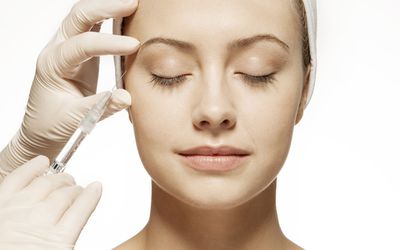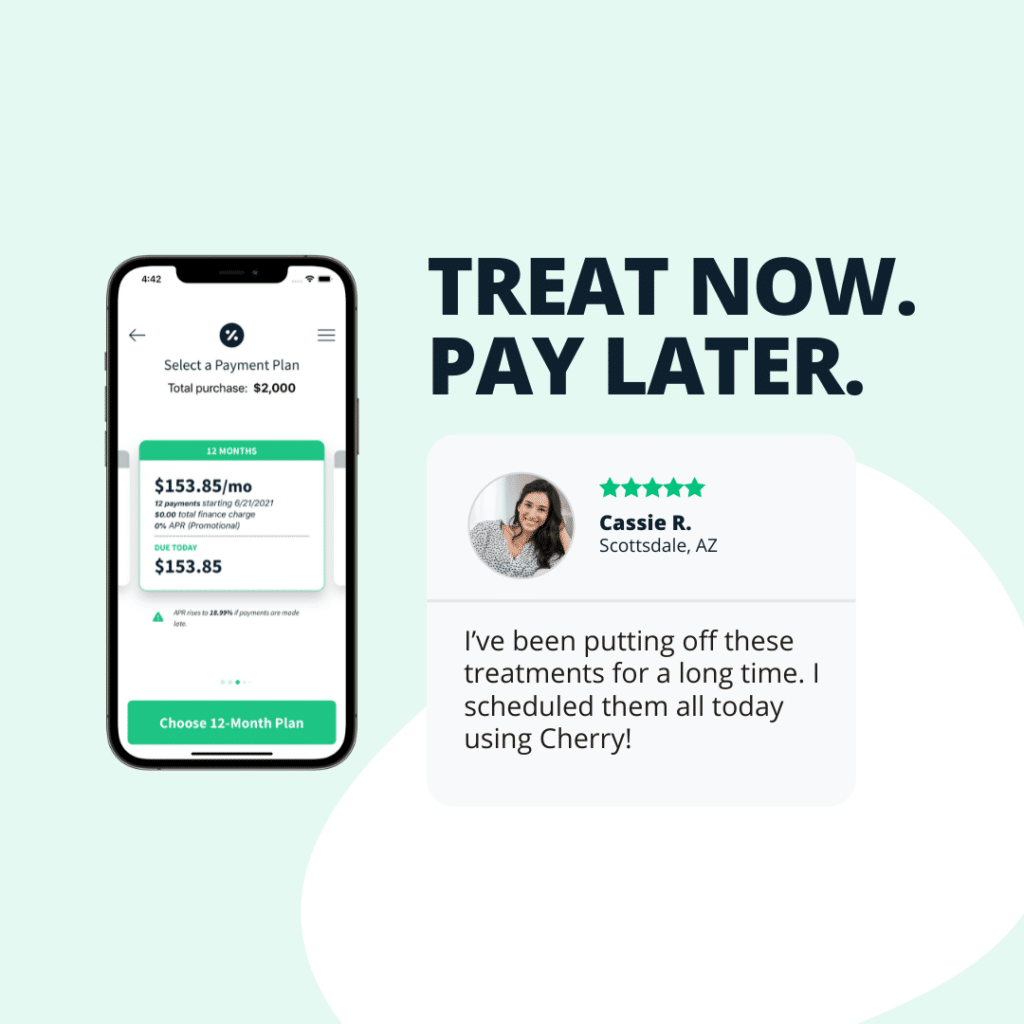Botox, also known as Botulinum toxins, was first introduced to the market in 1989. It has remained a highly-respected wonder drug that aids in fighting time and keeping you young. Botox is a well-known clinical treatment that has both cosmetic and therapeutic uses. Botox, like any other injection to the skin, has risks.
What are the side effects of Botox injections? Botox is a safe cosmetic procedure with a low complication rate when performed by a skilled practitioner. However, you might experience adverse reactions. It’s important to know what to expect from your treatment if you decide to treat the forehead. This is often where you see wrinkles on your forehead.
Table of Contents
What are the side effects of Botox on the forehead?
1. Bruising
Any injection can lead to bruising and swelling at the site where the needle is inserted, so it’s only natural that Botox can cause the same effect. A skilled practitioner or surgeon can advise you on the safest and most effective ways to prevent bruising.
You can get proper guidance and Botox post-care instructions to address any bruising that may have developed following your treatment. The forehead may appear reddened and swollen if you treat facial wrinkles, especially forehead lines. If these symptoms occur, they should disappear within a few days. To prevent bruising, it would be a good idea to stop taking blood-thinning drugs and supplements that contain fish oil, garlic, or ginseng before you start treatment.
2. Pain at the injection area
A botulinum-toxin injection doesn’t cause pain for most people. However, for some, it can be painful. It is common and can be managed with topical numbing creams. The botox injection’s pain intensity will depend on the skin of the patient and the skill level of the injector.
3. Bleeding
A Botox treatment can cause slight bleeding, similar to bruising. The needle can puncture a tiny vein or capillary in your skin and cause blood to flow from the injection site. The bleeding should be minor and typically stops within a few hours. It also depends on the injector’s skill, technique, and experience. You may also be more likely to get bleeding if you are particularly prone.
4. Upset Stomach
Botox cosmetic procedures can cause upset stomach, nausea, and constipation. The symptoms can last from a few days to a couple of weeks and are usually mild or moderate. These symptoms are easily managed, so treatments are simple:
- Increase your vegetable and fruit intake
- Ginger tea is a great way to calm your stomach.
- Eat bland, low-fat food.
- Take a fiber supplement.
- Warm bath.
- Light exercises, at most three times per week.
5. Dry Mouth
Your mouth may feel dry after a Botox cosmetic procedure, and this is a common side effect that usually disappears within a few days. A dry mouth can be described as a dry or sticky mouth. If your saliva feels thick or stringy, your throat feels dry or hoarse, and your swallowing difficulties are apparent, it could be a sign that you have a dry mouth. Drink water, eat sugarless candy, sugar-free gum, or use an alcohol-free mouthwash to relieve the discomfort. It would be best if you also stopped breathing through your mouth.
6. Dysphagia
Botox injections on the forehead can cause dysphagia or difficulty swallowing. Even if you have received the injection from a skilled professional, it can still occur. This is because a given dose might not be sufficient for some patients, but it could be excessive for others. This can cause the toxins to spread to nearby muscles. This side effect is usually temporary and resolves within 2-10 days.
Your doctor should know the exact symptoms you are experiencing to adjust your doses. If you have dysphagia, take small bites of food and chew thoroughly. Then, drink a glass of water to wash it down. For a time, eat only soft foods. You can use a straw for drinking if you have difficulty swallowing fluids. Although this is rare, calling your doctor right away is important.
7. Drooping Eyelids
Botox injections into the forehead muscle and the area between the eyes can cause a droopy or irritated eyelid. This adverse reaction is more likely if the person administering the treatment hasn’t had enough training and experience. They may inject Botox in the wrong place or use a high dose. This can lead to muscle weakness and droop, making it difficult for you to open your eyes. Vision problems may also occur. Droopy eyelids should disappear in four to six weeks. You can still treat the problem with apraclonidine (an eye drop that can reduce drooping eyes but not your eyebrows).
Can BOTOX be a potential cause of allergic reactions?
Botox injections can cause allergic reactions, although it is rare. An allergic reaction to Botox can cause wheezing, itching, difficulty breathing, and swelling of the lips, throat, tongue, and mouth. Botulinum toxin can also spread beyond the injection site, and this can cause serious side effects that could be life-threatening in some patients.
If you have any side effects after Botox treatment, seek medical help immediately.
- Muscle weakness severe
- Bladder control lost
- Trouble speaking or swallowing, hoarse voice
- Vision problems, irritation, extreme dryness, and eye pain are possible.
- Pain radiating from your jaw or shoulder to your chest, pressure and chest pain, irregular heartbeats
- Urinating causes pain
- Cough, sore throat, tightness in the chest, and shortness or no breath
- Vision problems such as blurred vision, crusting, swelling, and drainage of the eyelids.
Is Botox Safe?
Botox has been approved and regulated for decades. Even compared to dermal filler, this procedure has been medically proven safe. Botox is injected directly into the muscle, not the skin’s layers, giving patients confidence in its safety. This reduces the chance of injecting in the wrong layer of skin as opposed to dermal filler. Cosmetic Botox also doesn’t last forever and will eventually wear off.
Botox can be used for aesthetic purposes as well as to treat neck spasms (cervical Dystonia), neck pain (hyperhidrosis), neck pain, overactive bladder, urinary tract infections, and lazy eye (eyelid dilation). Botox has been used to prevent migraines, neuromuscular disorders, and myasthenia gravism, and can also be used to treat muscle spasms and limb spasticity. Botox reduces muscle contraction by blocking the release of Acetylcholine, resulting in decreased stiffness and muscle relaxation. Although, as mentioned above, there can be more severe side effects.
Why Reputable Practitioners are Important
The medical aesthetic industry has many people undercutting to stay competitive and offering Botox injections at very low prices. These are often illegitimate professionals who don’t have the necessary training or experience to deliver the best results for their patients. It is vital to hire experienced and qualified practitioners who have a proven track record in Botox treatments.
Contact local dermatologists, plastic surgeons, ophthalmologists, and board-certified practitioners with the experience and proper skills to administer the correct doses of bo in your chosen areas.
Botox can cause adverse reactions and side effects that are more common than expected. It is essential to choose a reputable and reliable Botox provider.
Trust NuWays MD to Receive Safe and Effective Botox Treatments
A qualified practitioner is the best way to reduce risk with Botox. The highly-trained cosmetic professionals at NuWays MD Anti-Aging & Laser Center are dedicated to providing you with the best Botox treatments in Boca Raton.
Contact us if you are interested in this cosmetic procedure. It’s time to say goodbye to wrinkles and embrace a youthful, radiant appearance. Our extensive selection of non-invasive treatments and advanced medical spa technologies can improve your skin while guaranteeing beautiful, lasting results.


